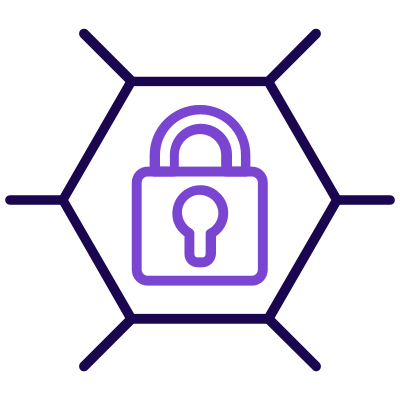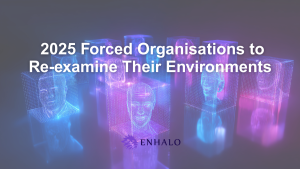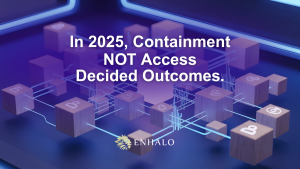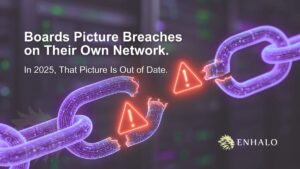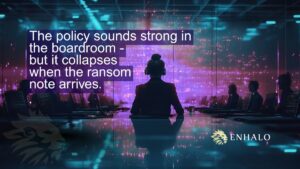The internet has made the world smaller in many ways, but it has also opened us up to a multitude of villainous influences that have never been so diverse and challenging. As fast as cybersecurity solutions have grown, the hacking world has grown faster.
Cybersecurity is absolutely vital in a world where the sophistication of cybercriminals and their relentless attacks are unparalleled.
What is Cybersecurity?
Cybersecurity is the practice of protecting and defending internet-connected computers, servers, mobile devices, electronic systems, networks, and company data, from malicious attackers who want to gain unauthorised access into these systems.
Cyber attackers have a unique set of skills and tools at their disposal; making it their mission to discover computer security risks and vulnerabilities not only in the technology but also through human behaviour.
They use this information to plot attacks estimated to cause $6 trillion in losses in 2021.
Hackers have become more sophisticated, and unlike the corporate world that protects Intellectual Property (IP), hackers gleefully share their tools and tricks with other cybercriminals. This means that any beginner hacker can easily find the tools online for free to plot a cyber-attack online.
Cybersecurity is a landscape that is continuously changing, with new technologies developing every day creating opportunities for hackers who are constantly looking for new ways to exploit individuals and businesses alike.
Who are Cyber Criminals?
The broader definition of a cyber criminal is someone who commits a crime either online or where technology is the means or target for the attack.
Most cybercriminals are motivated by financial gain, however, there are also other types of cybercriminals out there. Examples are the hobby hacker, politically motivated hacker, terrorist organisation, government-sponsored hacking, insider threats such as disgruntled employees or employees used by a competitor to get access to company secrets.
There is a long list of acts (crimes) that make a person, or group, classified as cybercriminals, and these crimes include but are not limited to:
- Credit card fraud
- Business Email Compromise (BEC) Scams
- Ransomware
- Cyber stalking
- Defaming someone online
- Unauthorised access to computer systems
- Ignoring copyright, trademarks and software licensing
- Overriding encryption to illegally make copies
- Software piracy
- Identity theft
Common Cyber Attacks
Cyber threats come in many forms, here are some of the most popular:
- Malware is malicious software programs where the hacker uses a file or program – such as a worm, virus, spyware or trojan horse – to cause harm to a user’s device or use it to proxy illegal activities
- Ransomware is a type of Malware that locks a victim’s computer system and its files, usually by encrypting it and demanding payment to unlock it.
- Social engineering is about using human behaviour to trick a user into breaking a company’s security procedures thereby revealing sensitive information such as logins or passwords.
- Phishing is a type of fraud where a user receives a fraudulent email resembling one from a very reliable source, the intention is to steal personal information such as login details or credit card details.
- DDoS (Distributed Denial-of-Service attack) is where criminals make a device or network resource unavailable temporarily by flooding the victim with requests from multiple sources, therefore overloading the system. The idea is to disrupt normal customers from doing business with the organisation.
Why Do You Need Cyber Security?
You need cybersecurity just like the earth needs an ozone layer to shield the planet from the sun’s damaging ultraviolet radiation. And just like holes in the ozone layer influence the future of our civilization, so too do the ‘holes’ in your company’s cybersecurity influence yours.
- Cybercrime is so pervasive that anyone who browses the internet is a potential victim.
- Research shows that despite 76% of people being aware of the security risks of links in emails, many click on them anyway, unknowingly installing malware on their computers.
- Considering that 92% of malware is delivered using email, the need for more effective email spam filtering solutions has never been higher.
- Data breaches damage company’s reputations and the financial outlay required to regain stakeholder’s trust, is high.
- The fate of your company, and its directors, are directly tied to keeping your digital assets safe. Not doing so can result in fines and high costs associated with legal remediation.
The fact of the matter is whether you are an individual, small business, or large multinational, you rely on computer systems every day. This dependency on computers means that the likelihood of cybercrime happening to you is high, meaning some form of cyber security protection is needed.
How Can IT Security Be Managed?
A solid approach to managing your IT security and cybersecurity involves two components: prevention and response.
Prevention:
This would involve implementing tools such as behaviour analytics, endpoint management, incident management, vulnerability scanning, penetration testing, firewalls and security monitoring tools, to help build your defenses.
Cyber security approaches are shifting from a perimeter-based security model, towards a more data-focused one, where consistent monitoring, as well as real-time threat assessments, are key components.
As people are the biggest target of hackers through phishing, continuous education programs are part of a preventative cyber security plan.
Response:
The second part of your strategy relates to building cyber resilience and this is about how you respond once a breach occurs.
The point of this component of your strategy is to not only to recover quickly but also to learn how the cyber breach occurred and what can be done to prevent it from happening again.
How Can Cyber Security Be Improved?
Map out your most important assets
It is critical to understand your most important assets, as well as the interactions that take place within the organisation and also from external sources such as customers, suppliers, or remote employees.
Be clear on access
Understanding who has access to your digital assets, where it is stored, and where it moves to, is your first step.
Build a multi-layered cyber security defense strategy
Multi-layered security is crucial in today’s connected environment because only IT security that defends across many protocols and apps will be able to combat multi-pronged threats.
Ensure your company has a robust patch management plan
Vulnerability holes must be plugged immediately because leaving software and operating systems unpatched places your company at risk of a data breach.
Use two-factor authentication.
This makes it difficult for the hacker to guess, and use, user passwords, because, without a code to verify login credentials, the password is useless.
Secure your endpoints
Because endpoint devices are so vulnerable you must take as many proactive measures as you can.
Improve recovery time after a breach
Ensure you can restore business operations quickly. Back up everything and make sure the business can recover quickly from any security-related disasters.
Be prepared for a real cyberattack
Test your IT security readiness and response plan through simulations and/or recreating the kill chain to perfect your company’s response.
Drive cybersecurity from an executive-level
This will ensure security remains a top business priority, not just a technical initiative.
Don’t view cybersecurity and Disaster Recovery separately.
They need to work hand-in-hand to minimise the risks associated with unplanned incidents and their impact on the business.
Don’t assume cyber security is a once-off
Cybersecurity requires an ongoing dedication. Assessing your cybersecurity risk on a proactive and consistent basis will ensure that your company knows what type of threats to be on the lookout for.
In conclusion, ENHALO are experts in cybersecurity. We design for the big picture, from the smallest vulnerability you have to the biggest threats you face. Having built cyber defense solutions for top companies across various industries around the globe, our credentials, expertise, and technology tools are unparalleled in the market.
Contact us today for a resilient cyber defense, optimised for your business.


